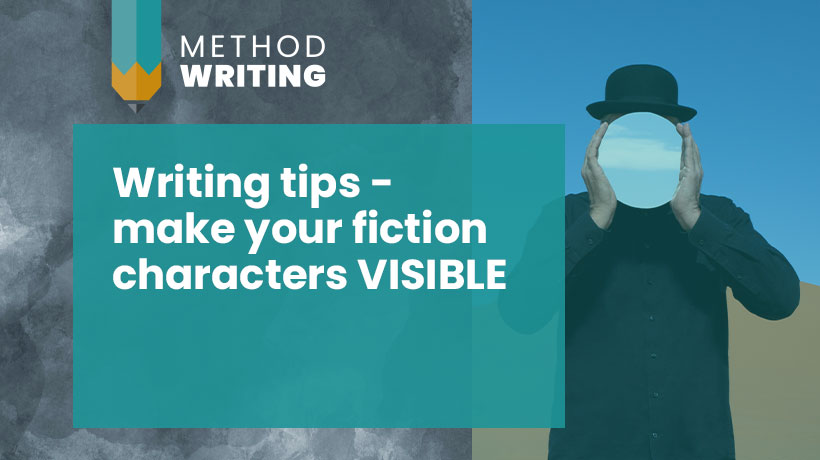Writing technique – are you puppeting your fiction characters?
Puppeting is a common issue in fiction writing. It means the characters seem a bit lifeless and mechanical, without a vivid sense of action and flow. Usually, it just means the author hasn’t yet worked out how to weave action, description and dialogue effectively together. Here’s an overview of the puppeting problem, and how to solve it.
What is puppeting? Writing more realistic character action
Here’s an example of “puppeting”. This isn’t a technical term, by the way – I’ve borrowed it from theatre, where it means “bringing an inanimate object to life”.
“Great idea,” said Karen. “I’d love to know more about it.”
She picked up her pencil and prepared to take notes, sitting down comfortably in her seat and lifting her coffee cup to lips, gazing at Jim, who was sitting across from her.
“OK,” said Jim, pouring her another cup from the cafetière. He brushed his hair from his eyes, scratched his chin and prepared to speak. His gaze fell on Karen’s yellow notebook and blue fountain pen. He offered her milk, but she refused.
Clearly, you’d never write something this clunky! However, it’s easy to fall into this trap when you’re trying to build a picture.
Puppeting prevention 1 – cut insignificant action
Too much time spent on insignificant detail is dull. It doesn’t advance the exciting story. It also slows the pace and forces readers to focus on unrewarding minutiae.
Instead, focus on dramatic action that builds tension, conflict and subtext between the characters.
Describing minutiae can also be used to slow time. You may want to do this when the detail is dramatically important.
For example, if your character’s car crashes into a wall, you’ll want us to feel that slow-motion authenticity, so you’ll spend time describing it.
Just beware of anything that feels like filler. The puppeting effect can often kick in when you’re too faithful to the detail of a scene, at the expense of story.
When in doubt, leave it out.
Tip 2 – avoid sequences of actions
You might expect puppeting to be less likely when there’s lots of action in a scene.
So here’s the same passage in a more exciting genre:
“So be it,” said Grimaldi. “Tie her to the stake.”
He picked up his broadsword and swung it aloft to slash the length of rope, swishing it around his head and grunting, gazing at Sheba, who stared defiantly.
“Never,” said Sheba, unsheathing her dagger…
Interestingly, the two examples have the same structure. And even though the action is more interesting, there’s still a sense of “puppeting”.
This is because the actions are in a sequence, or a kind of list. It’s a “painting by numbers” approach to action.
We rarely behave and speak in a “then, then, then” measured kind of way, like this.
“Words words words,” she said. Then she did a thing. “Words words.” She did another thing, and another. Then she turned and faced him. “Words words.”
This exaggeration makes the point that our actions and speech are fluid, tumbling over each other. As a sequential list, they feel too robotic.
Tip 3 – vary the sentence rhythm
The puppeting effect can also kick in if your writing rhythm is repetitive.
This is particularly true for sentence rhythm.
When sentence rhythms have similar structure, the writing can feel a bit “paint by numbers”.
“Words, words,” he said. He did a thing, doing another thing as he did so.
“Words, words,” she answered. Then she did a thing, and another thing for good measure.
“Words, words,” he said, in response.
To mitigate this puppeting effect, change up the flow with subordinate clauses:
Doing a thing, he strode into the room. “Words, words,” he said.
As he did the thing, she strode into the room. “Words, words,” she said.
Or use free indirect style:
He did a thing. Words, words. She was always doing that “words, words” thing. It did his head in.
Practice these techniques and come up with your own ideas for varied flow.
Tip 4 – reduce dialogue tags
Puppeting is a particular danger with dialogue.
Dialogue tags such as those “she said, he said” are often used to weave together dialogue and action.
And they’re very useful phrases! However, if they’re overdone, the effect can be choppy.
If you overdo dialogue tags, the repetition of “she said, he said” can get start to feel like tennis.
And often, they’re not really needed.
Sometimes, writers try to avoid repetitive dialogue tags by using other verbs – he asked, she replied. Simple words like this are fine.
But often, beginning writers overshoot into more unusual words: he grunted, she smirked.
And this can become the dreaded “saidphobia” – the avoidance of everyday “said” by using ornate variation.
Sometimes, this is unintentionally funny, as in she expostulated, he ejaculated.
These words are far too heavy-handed to be simple connecting phrases. They’re like divas, drawing attention to themselves and obscuring the dialogue itself.
And they tend to distance the reader from the characters, which can once again reinforce a sense of puppeting.
Often, you can simply cut repetition of “she said, he said”, and replace them with action description. If it’s clear which character is doing what and speaking which lines, you don’t need “to say”.
For example:
“Words, words,” he said. He did a thing, doing another thing as he did so.
“Words, words,” she answered. Then she did a thing, and another thing for good measure.
“Words, words,” he said, in response.
Could become:
“Best get going, then.” He slung the heavy backpack over his shoulder, and headed for the door. Then he frowned. “My passport.”
She smiled. “Ah, yes. About that.” She handed him a folded brown envelope. “Don’t hate me. Or Fido.”
Fido lay panting on the floor in the heat, all big eyes and lolling tongue.
Kevin glared. “Not again.”
Surprisingly, the verb “to say” hasn’t been used here at all. However, it’s still clear who’s doing what, and saying what.
Deliberate practice:
Now, write a short scene with two characters in dialogue. Avoid using the verb “to say” and substitutes for “to say”, and use action and description instead. What do you discover?


